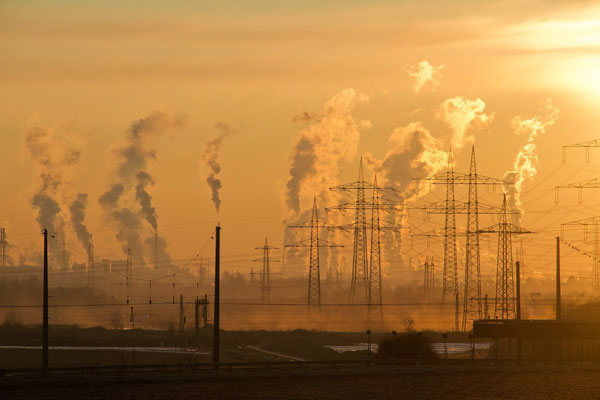Sandstorms and yellow dust are striking Mongolia, China, and South Korea

[Air Pollution, Photo Credit to Pixabay]
Mongolia, Beijing, and South Korea are suffocating because of a series of yellow dust sandstorms.
On March 22nd, 2023, Chinese authorities warned Beijing citizens to stay inside and refrain from outside activities as much as possible because of a severe dust storm.
Beijing measured a maximum of 655 micrograms per cubic meter on Monday.
The World Health Organization considers anything above 25 to be unsafe.
Furthermore, on March 22, 2023, Beijing recorded an air quality index (AQI) of 500, which is the highest pollution level, level 6.
Level 6 is considered to be very hazardous, an emergency level of air pollution .
When people inhale yellow dust in level 6, their respiratory systems are at risk of being damaged.
Symptoms such as persistent sneezing, clear rhinorrhea, and a blocked nose can occur just by inhaling yellow dust.
The yellow dust is not only affecting Beijing, but also other cities in China including Shaanxi, Shanxi, Hebei, Heilongjiang, Jilin, Liaoning, Shandong, Henan, Jiangsu, Anhui and Hubei provinces.
These cities face a hazy view with buildings and apartments rendered invisible due to the thick yellow dust.
In Particular, dense clouds have entirely covered the sky of Beijing.
The effect of this yellow dust originates from Mongolia. In Mongolia, 6 people have died and 81 people are missing due to this yellow dust.
There are various influences causing the yellow dust in Mongolia.
However, intense desertification in Mongolia is pointed out as the strongest cause.
Due to a lack of freshwater and plant-matter, constant land erosion leads to sand and other dust particles combining to create a sandstorm.
The yellow dust is expected to move continuously southwards.
Therefore, the yellow dust that started from Mongolia is heading towards the Korea province.
As a result, the air quality of South Korea has plummeted over the past few days.
The air quality of South Korea deteriorated until March 25th, 2023.
The provinces in South Korea were affected in a geographical order.
The provinces include Seoul, Incheon, Gangwon, Daegu, Gwangju, Jeju-do, and Chungcheongbuk-do Province.
These provinces faced severe concentration of particulate matter.
In addition, although the yellow dust came from the East, Busan, a province in the South, also suffered through a thick layer of yellow dust as well.
South Korean government officials have warned citizens of these provinces to wear masks.
After March 25th, the government officials cleared the nationwide yellow-dust warning.
However, the particulate matter concentration is still high, and weather forecasts are suggesting people withhold outdoor activities as much as possible.
Although the yellow dust has ameliorated for now, this phenomenon has become a common occurrence.
Newspapers and magazines criticizing the yellow dust in Mongolia, China, and South Korea have now become an annual event.
The increase in yellow dust storms appear to be a symptom of larger, more worrying trends. as Yellow dust is one of the results of global warming.

- Siyeon Kim / Grade 10
- JungKyung High School

![THE HERALD STUDENT REPORTERS [US]](/assets/images/logo_student_us.png)
![THE HERALD STUDENT REPORTERS [Canada]](/assets/images/logo_student_ca.png)
